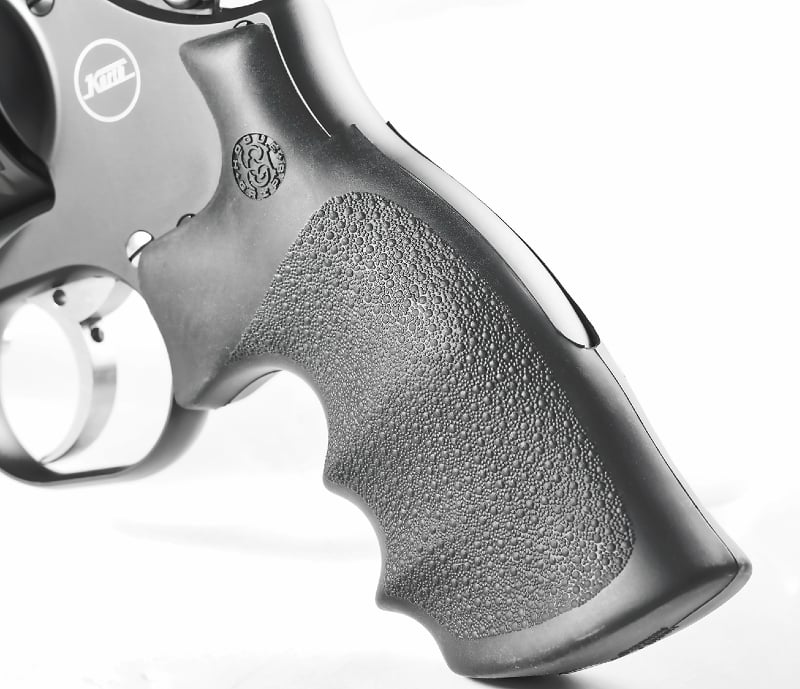The pistol grip, an integral component of modern firearms, has a rich history that spans centuries of technological advancements, ergonomic considerations, and evolving design philosophies. Originating as a functional necessity for improved accuracy and control, the pistol grip has undergone numerous transformations over time, culminating in the ergonomic designs we see today. Such historical richness warrants a closer look into the origins, evolution, and contemporary perspective of the modern pistol grip, tracing its journey from early firearms to those of today.

The pistol grip’s history can be traced back to the very origins of firearms themselves. Early matchlock and wheellock firearms of the 15th and 16th centuries lacked the ergonomic features that are now synonymous with modern weapons. These early firearms were often unwieldy and difficult to control, limiting accuracy and effective use.
The concept of the pistol grip emerged as a solution to these challenges. By introducing a handle-like extension at the rear of the firearm, shooters gained enhanced stability and control over their weapons. This rudimentary grip allowed for a more comfortable and secure hold, contributing to improved accuracy.
The 18th and 19th centuries witnessed significant advancements in firearm technology and further refinements to the pistol grip design. As firearms evolved from single-shot muskets to more sophisticated repeaters, the importance of ergonomics became increasingly apparent.
One notable example of this evolution is the Colt Single Action Army revolver, introduced in 1873. This iconic firearm featured a distinctive curved grip that fits naturally into the hand, enhancing control and managing recoil. The Colt Single Action Army’s grip design set a precedent for future pistol grips, emphasizing comfort and user experience.

The Industrial Revolution of the 18th and 19th centuries revolutionized manufacturing processes and enabled the mass production of firearms. This shift allowed for greater experimentation with pistol grip designs and materials, leading to the development of more comfortable and effective grips.
During this period, firearms designers began to explore the nuances of grip angles, shapes, and textures. The goal was to create grips that would optimize a shooter’s ability to maintain consistent aim, manage recoil, and facilitate rapid target acquisition. These considerations played a pivotal role in shaping the trajectory of pistol grip evolution.
The 20th century marked a period of unprecedented innovation and conflict, driving further refinements in pistol grip design. The two World Wars acted as catalysts for technological advancements that influenced firearm design, including the pistol grip.

The advent of semi-automatic and automatic firearms necessitated grips that could accommodate increased recoil and allow for rapid follow-up shots. The Luger P08, a widely recognized German pistol from World War I, featured a distinctive grip angle that contributed to its accuracy and handling characteristics.
As firearms technology continued to evolve, the pistol grip became a focal point for customization and specialization. Firearm manufacturers and individual users began to experiment with different materials, textures, and designs to cater to diverse preferences and shooting styles.
Ergonomics studies and human factors research also played a significant role during this era. Manufacturers started incorporating scientific principles into grip design, considering factors like hand size, grip strength, and natural pointing tendencies. This approach led to the development of ambidextrous grips, modular systems, and adjustable grip angles to accommodate a wide range of users.
The latter part of the 20th century and the early 21st century witnessed the convergence of technology, ergonomics, and material science in pistol grip design. With the advent of polymers and advanced manufacturing techniques, designers gained greater flexibility in creating grips that were both comfortable and durable.

Firearm manufacturers began using Computer-Aided Design (CAD) software to model grip shapes that optimized natural hand placement and shooting posture. This marked the rise of the “finger groove” and “backstrap” designs, where the grip is contoured to fit the hand’s natural curvature. Grips also started incorporating texturing patterns to enhance grip traction and reduce slippage during firing.
The 21st century brought a surge in firearm accessory integration and modular design. Pistol grips began incorporating storage compartments for batteries, tools, or cleaning equipment. Some grips were designed to accommodate laser sights, tactical lights, or vertical foregrips, expanding the functionality of the firearm system.
While the evolution of the modern pistol grip has been primarily driven by technological and ergonomic considerations, it’s important to acknowledge the legal and cultural implications associated with firearm design.
Pistol grip features have become focal points of legislative debates and regulatory changes. Some governments have implemented restrictions on the design of pistol grips, aiming to address concerns about general firearm use or to classify certain firearms. These regulations often revolve around detachable magazines, folding stocks, and ergonomic grip designs that enhance the firearm’s capabilities. Side-stepping any specific agenda, suffice it to say that even pistol grips are not exempt from the tentacles of modern politics.
In the present day, pistol grip design continues to evolve in response to emerging trends, technologies, and user preferences. Firearm manufacturers are investing in research and development to create grips that optimize performance and consider factors like comfort, look and feel during extended use, ease of maintenance, and integration with other accessories.
The Future of the Pistol Grip
The future of pistol grip designs will likely be influenced by further advancements in material sciences, additive manufacturing, and ergonomic research. As technologies such as 3D printing become more accessible, firearm enthusiasts may be able to design and create bespoke grips tailored to their unique wants and needs. 3D printing, in particular, enables designers to quickly produce functional prototypes, assess their ergonomic qualities, and make necessary adjustments without the lengthy lead times associated with traditional manufacturing methods. This iterative approach fosters innovation and responsiveness to user feedback.
Additionally, Smart technologies and integrated sensors could be incorporated into grips to provide real-time feedback on grip pressure, stability, and shooting technique. These innovations could lead to improved training and enhanced shooting performance.
The modern era of firearm design presents a delicate balance between honoring tradition and embracing innovation. While technological advancements have inspired more efficient, accurate, and customizable pistol grips, there remains a deep-seated appreciation for the classic designs that have become emblematic of certain firearms.
The continued evolution of the pistol grip is likely to benefit from interdisciplinary collaborations between firearm designers, ergonomists, materials scientists, and physiologists. These collaborations can lead to a deeper understanding of how grip design impacts shooting performance, comfort, and user experience.
Research into human physiology, biomechanics, and cognitive processes could inform the creation of grips that intuitively align with the natural movements of the hand and body. By integrating data-driven insights, designers can craft grips that enhance accuracy, reduce fatigue, and minimize the risk of injuries caused by prolonged shooting sessions.
Conclusion
From its early beginnings as a pragmatic solution for improved accuracy to its current role as a customizable, technologically advanced component, the pistol grip has been instrumental in shaping the usability and aesthetics of firearms.
The history and evolution of the modern pistol grip is a testament to the intricate interplay of technology, human factors, culture, and design philosophy. From its modest origins as a simple extension for improved control to its current role as a customizable, ergonomic interface, the pistol grip’s journey encapsulates the ever-changing landscape of firearm design.
To this day, firearm pistol grip design and manufacturing technology continues to evolve and remains at the forefront of innovation, adapting to meet the needs of an ever-changing landscape of shooting disciplines, user preferences, and technological possibilities.
As firearm enthusiasts, manufacturers, and researchers continue in their collaborative efforts to push the boundaries of innovation, the pistol grip will continue to evolve, adapting to the demands of an evolving world while respecting the legacy of its predecessors. The future holds exciting possibilities for grip design driven by a commitment to safety, performance, and the ongoing pursuit of excellence in firearm craftsmanship.


